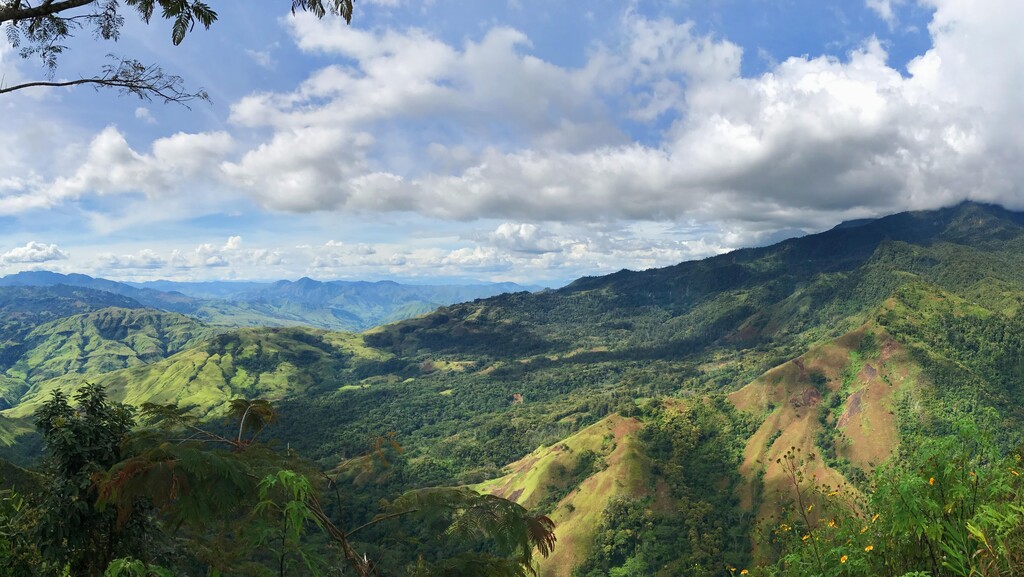

The rainforest stretches like a green belt around the earth and covers almost 6% of the earth's surface. Even though it only covers a small part of the earth's surface, it is extremely important for nature and for us humans: worldwide, rainforests produce no less than 40 % of the earth's oxygen and regulate microclimate, wind and precipitation. The Amazon rainforest, for example, produces up to 80 % of the daily rain itself through evaporation.
With about 8 million species, tropical rainforests are home to more than four-fifths of the animal and plant species living on land. They support 90% of all primates, 80% of all insects, 40% of all birds and 60% of all plants on earth. The animals and plants living in the rainforest are closely interrelated. Many animal species are forage specialists, while many plants depend on the pollination of certain animal species.
And not only animal and plant species live in the rainforest. The tropical rainforest is also a habitat for numerous indigenous peoples. Altogether, about 200 to 300 million people still live in and with the rainforest ecosystem.
Tropical rainforests are also significant carbon sinks and thus important climate stabilisers. Forests are crucial for mitigating climate change. They store around 660 billion tonnes of carbon in soils and vegetation worldwide, accounting for more than half of the world's carbon stock.
Moreover, did you know that plants from the rainforest are important ingredients in our medicines? Around 25 % of our modern medicines contain active ingredients from tropical plants. The incredible biodiversity of animals and plants in the tropical rainforest is thus an important component of our medicine. These are used, for example, to treat malaria, heart disease, bronchitis, diabetes or rheumatism. In addition, our diet would also be relatively monotonous without the rainforest. Almost 80 % of our food originally comes from the tropical rainforests, for example bananas, oranges, lemons, corn, rice, potatoes, coffee, cocoa or vanilla.
Despite their importance for our climate and biodiversity, the state of the rainforests is critical. According to the Food and Agriculture Organisation of the United Nations, the world's rainforests remain under severe threat as their range continues to shrink. More than half of the world's forests have already been destroyed by humans, much of it in the tropics. At 157 million hectares, the loss of tropical forests accounted for more than 90% of global deforestation from 2000 to 2018 - roughly the size of Western Europe. If the destruction of the rainforests continues at this rate and no additional protective measures are taken, experts estimate that a further 289 million hectares of tropical rainforest will be cleared by 2050 - by the end of the century it could possibly have disappeared completely.
In particular, unsustainable forms of land use and intensified production processes in agriculture are responsible for the destruction of the rainforests. Almost 90 % of deforestation worldwide can be attributed to the expansion of agriculture.
Other causes of deforestation are the spread of cities and the expansion of infrastructure, which often cuts wide swaths through still healthy forests and results in the increasing fragmentation of intact forests. The exploitation of mineral resources such as iron ore, gold or oil also leads to a continuous destruction of the so important ecosystem.
Against the backdrop of climate change, species extinction and the massive encroachment on intact nature, it is obvious that the current deforestation of tropical forests cannot simply continue. Solutions to end deforestation, especially in the context of agriculture, are already available. According to the United Nations, these three aspects must be included:
The conservation of existing forests: Ending deforestation would have numerous local and global benefits. For example, more than half of the country's biodiversity would be preserved, natural disasters would be reduced, soils and water would be protected and food security would be increased in the long term.
Restoring degraded land through the expansion of agroforestry: According to the FAO, agricultural cropland on former forest land would benefit from the addition of trees to the land. On the one hand, agricultural productivity can be increased, and on the other, important ecosystem services are provided by trees.
Sustainable use of forests and building green value chains: More productive and sustainable agro-food systems are key to meeting future food needs while preserving forests. It is important to use forests sustainably in small-scale systems, as smallholder farmers, local communities and indigenous peoples own almost half of the world's forest and agricultural landscapes and are therefore crucial to implementing more sustainable agriculture and managing forests in a more sustainable way. One beneficial method that is suitable for the sustainable use of forests and the simultaneous cultivation of food is dynamic agroforestry, which is particularly effective in small-scale farming structures.
Help protect the rainforest! Help to stop deforestation and protect forests in the long term!